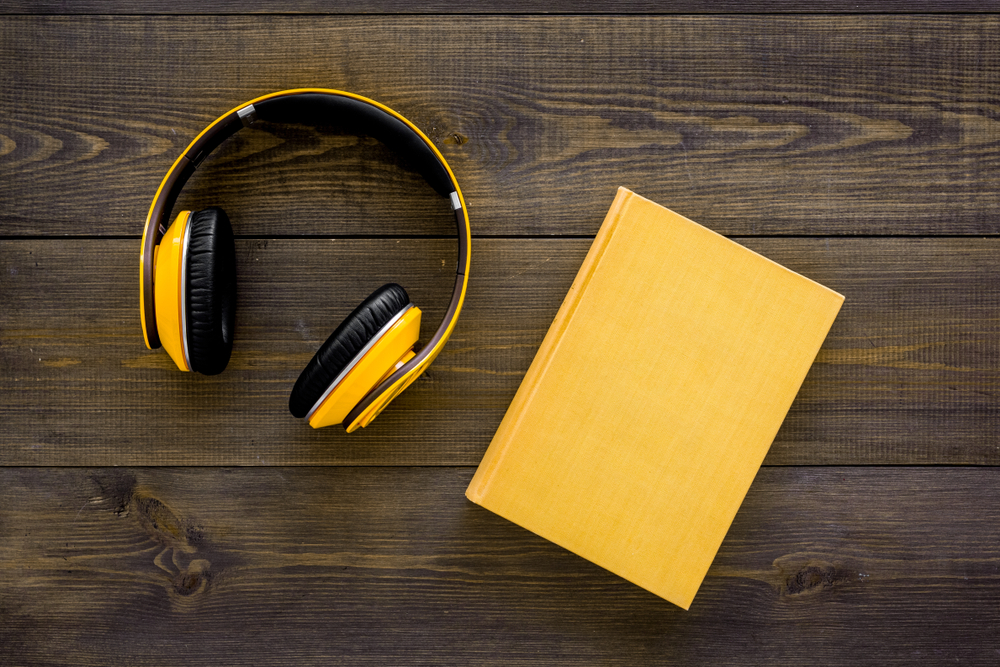by Jen Jobart
Like everyone else these days, I keep busy. I don’t currently have a paying job, but I’m the primary caretaker for two kids – one who I homeschool, and one who goes to a parent participation school, where I teach writing to my son’s fellow fourth graders. Someone literally always needs something from me.
Somehow, I’ve got to carve time out of all of this to write. As the saying goes, “If mama ain’t writing, ain’t nobody happy” (or something like that). Writing keeps me sane, and if I’m sane, everybody else is too.
But I often find myself busy with a task that doesn’t require my entire brain. Maybe I’ll be sitting in traffic, or chopping carrots for dinner, or folding laundry. That’s when I play an audiobook version of a craft book and let someone else teach me about writing while I carry on with my life.
I listen to my favorite craft books over and over again. Every time I listen, I pick up something new. What I hear depends on where I am in my own story, and what problems I’m currently trying to solve.
There is some magic that happens for me, particularly with audiobooks. Somehow, I’m not as immersed when I’m hearing a book as I am when I’m reading it, which leaves my brain free to simultaneously listen to what the book is saying, and also to consider how it applies to the story I’m writing. It’s a little like what happens when I take a class, but easier and more accessible because I can play an audiobook at any time. This magic formula often leads to epiphanies about my writing. That way, when I finally do have time to sit down and actually write, I am not looking at a blank page. Instead, I have some ideas to explore.
Where to find audiobooks
There are a couple of ways to get audiobooks.
You may be able to borrow audiobooks from your local library. My library uses OverDrive for this. That said, I wasn’t able to find any of the craft books I like in my library’s system. Maybe yours will have the books you want, so definitely check there first. (If you do find these books in a library system, please post which library you use in the comments. Libraries often share their resources, so maybe other people can use that library too.)
I mostly use Audible to listen to audiobooks. Audible has an app that you can download onto an Android or Apple phone, so that you can listen to anything in your library at any time. Once you buy a book, you own it and can listen to it over and over again.
If you haven’t used Audible, the best way to start is with a free trial. This will give you at least one free book, but often, you can get a reduced-price membership for a while. You can use this to get a couple of audiobooks, and then cancel the membership. You still own the books whether you remain an active member or not.
If you find you’re liking Audible and want to continue buying books, consider getting one of their plans. (Or ask someone else to buy you one. Holidays are coming!) My kids also like listening to audio versions of their favorite books, so we have a fairly large audiobook library, and I find the annual plan to be the least expensive and most flexible. If you use a plan, pay attention to how much you pay per credit, and how much each book costs. Sometimes a book will actually cost less than the credit, so it makes more sense to buy it outright and save your credits for more expensive books.
Another advantage of Audible is that, if you have both the Kindle and the Audible versions of a book, you can use Amazon’s Whispersync to seamlessly switch back and forth between versions. So, say you’re listening to a passage in the car, and you want to go back and read it again in bed that evening. You can open up the book in your Kindle and it will bounce you right to the spot you were listening to last. Handy. Amazon will often discount a book in one version if you already own it in the other.
Recommended audiobooks
Here are some of my favorite writing craft audiobooks. I’ve listed them in what I think is a reasonable “beginning to advanced” order.
You’ll notice that a lot of these books talk about how to write screenplays. There’s some debate about whether screenplay advice applies to novels. My personal opinion is that books, especially those written for kids, must compete not only with other books, but also with movies and television and video games, so studying screenwriting can only help us.
There are some key differences between writing books and writing screenplays. Movies convey a lot of information through images and music, which books can’t do. But books have the superpower of conveying inner thoughts, also known as interiority.
Regardless of execution, the concepts of story construction are still the same. So, to me, it makes sense to learn about story from a screenplay perspective. Hence my recommendations.
- The Hero’s 2 Journeys by Michael Hauge, Christopher Vogler
This is actually the recording of a workshop about screenwriting given by two Hollywood powerhouses. It is equally applicable to novel writing. I listen to this one over and over again and get something new out of it each time.
- Save the Cat! and Save the Cat Strikes Back by Blake Snyder, as well as Save the Cat! Writes a Novel by Jessica Brody
“Save the Cat” taught me story structure. It is essentially a simplified version of the Hero’s Journey. The novel version recently came out and I’m enjoying it so far. I’ve been listening to and reading the screenplay versions of Save the Cat for years and find they’re totally applicable to writing middle grade novels.
- Wired for Story: The Writer’s Guide to Using Brain Science to Hook Readers from the Very First Sentence by Lisa Cron
This book explains the neuroscience behind story. It is a selection of related topics, so it works well as an audiobook. This is another one I listen to often.
Taken together, Save the Cat and Wired for Story are a deeper dive to the information in The Hero’s 2 Journeys.
- Creating Character Arcs by K.M. Weiland is a deep dive into how to create characters that resonate with readers. K.M. Weiland also maintains a freely available podcast called Helping Writers Become Authors which is quite good.
- Using Myth to Power Your Story is the recording of another Christopher Vogler workshop that expands on the ideas in The Hero’s 2 Journeys. In writing this post, I also stumbled across Vogler’s Screenwriting for Hollywood, which looks promising.
- Robert McKee’s Story and Dialogue are available as audiobooks. I haven’t dived into the world of McKee yet, but plan to soon. I know he’s a pillar in the field.
- Even Joseph Campbell’s classic The Hero with a Thousand Faces is available as an audiobook. This is another one that I haven’t quite felt ready to listen to, but is on my “someday” list.
I hope you enjoy the world of audiobooks. If you find a craft audiobook that you particularly like that I haven’t included, please mention it in the comments. I’m always looking for new books, too, and welcome recommendations.
Jen Jobart writes middle grade fiction and is always sending characters she loves on dangerous adventures. She is an active member of the SCBWI and has studied writing for children through Stanford’s Continuing Studies program. When Jen’s not writing, she’s outside gardening and raising chickens at her home in the San Francisco Bay Area. Find her at www.jenjobart.com.


COMMENTs:
0